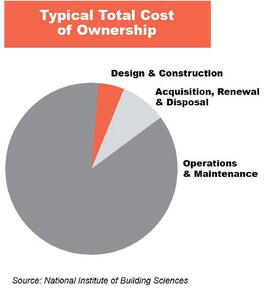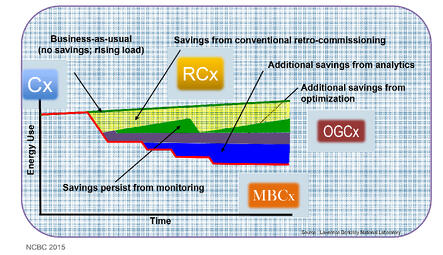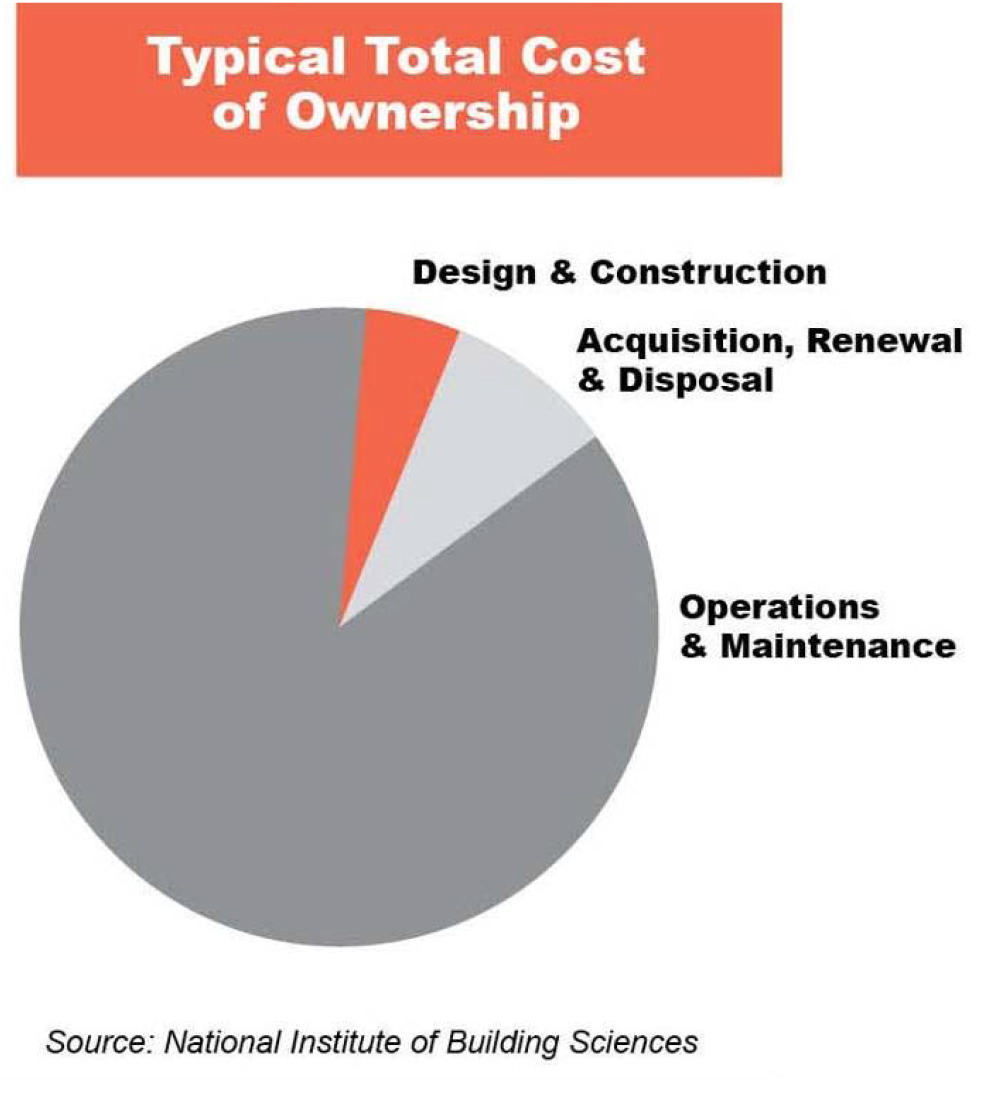Belimo Highlights: National Conference on Building Commissioning
2015 National Conference on Building Commissioning (NCBC); “Gateway to the Future of Commissioning”; is designed by the Building Commissioning (Cx) Association (BCA) to advance state-of-the-art building commissioning and the professionals within a forum for sharing the cost-effective processes for optimizing building performance, reducing energy use, and improving indoor air quality, occupancy comfort, and productivity.
At this year’s national conference William ‘Bill’ McMullen, President, Business Unit Manager, Energy Solutions, Dewberry announces that the BCA will be launching a University. The university is in the development stages and more information will be released online when it comes available.
Big Data was a central theme of this year conference. A highlight of a few of the sessions covered:
The Value of Submeter Data in Energy Information Systems Implementations: Andrea Salazar, Senior Engineer at EMI Consulting
Our industry is evolving with the use of the internet to allow for Energy Information Systems (EIS) to develop instant access to information such as fuel cost, weather, and sub metered data to enable us to make smarter operating decisions for lower cost and more efficient building operation.
Previous research into benefits of sub metering indicated:
- Energy Reduction 5%-46%
- Cost $0.02-$0.25 per sq. ft.
- Simple Payback 10 Months – 3.5 years
A recent study was conducted by EMI Consulting referencing 27 commercial buildings with EIS. The results indicate more sub metering (data) = more savings. When energy is metered at the building, system, and equipment level and integrated with sensors and building automation systems, the savings were measured up to 20% (Building + System + Equipment + Sensors + BAS Integration = 20%). Even more enlightening is that a higher level of integration resulted in lower incremental cost. However, technology and systems are new so cost/benefit is still evolving.
Lawrence Berkley National Lab (LBNL) hosts a site of EIS tools and research located at http://eis.lbl.gov/. The LBNL has worked with the California Energy Commission and the Department of Energy to evaluate and improve performance monitoring tools for energy savings in commercial buildings. This website covers all prior, recent and current LBNL work in energy information systems and types of performance monitoring and analysis technologies. The site also contains links to project-specific pages documenting DOE and CEC-funded work from 2008 to present, links to research publications, and presentations.
CX Mission Critical Facilities for Safety and Resiliency: Rachel Rueckert, PE, LEED-AP, QCxP and; Dave Guberud, QCxP, Ring & DuChateau, LLP
This presentation provided an in-depth understanding of resiliency including related threats and underlying principles. Commissioning of mission critical facilities for safety and resiliency is important in keeping the critical space at varying degrees of negative pressure. This requires not only a well-controlled and sealed air distribution system, but also envelopes that can pass a variety of tests. The ability of measuring direction of flow, redundancy of systems, and quick and tight damper control are some of the important HVAC functions.
Data Analysis in the Cx Process: Ryan Stroupe, PG&E Pacific Energy Center; and William E. Koran, PE, Director of Energy Analytics, Northwrite, Inc.
We were introduced to two different but powerful tools that enhance the visualization of measured building data to enable identification of proper operating trends and areas for improvements that can save energy. Both of these tools, ECAM and Universal Translator are free to download and use.
ECAM is a Microsoft Excel®-based tool that facilitates the examination of energy information from buildings and reduces the time spent analyzing utility meter data and system operational data. Starting from time-series data, ECAM automates a wide array of charting and analysis functionality to provide the ability to complete pre and post energy efficiency project regression analyses of utility interval meter data against outdoor air temperature. ECAM offers additional applications that can be used independently: analysis of a building’s load profile, creating per-square-foot metrics of building energy use, and developing scatter charts based on occupancy or time of day. These applications can ultimately be used to better understand a building’s energy use patterns and inform the selection of energy efficiency measures with the highest potential for savings.
The Universal Translator (UT) is a tool that was developed for building energy maintenance professionals that allows a Cx agent to take measured data and normalize it and put it in nice graphical form. The program is for anyone who works with “real world” data. Problem data might be data that comes from different data loggers where the clocks are not synchronized or from data loggers that recorded at different intervals. Calibration errors might be another source. The UT also has additional analysis functions to help analyze data. It includes modules to analyze economizers, light and plug loads, equipment runtime and set point analysis. Spending hours with a spreadsheet trying to take problem data and make it into something usable is a real task. The UT could save hours of work.
"Big Data", Better Choices: Data Tools for EBCx Impact: Terry Bickham, CEM, LEED AP, CDSM,CSDP; Director, Energy Services and Solutions, Trane
Continuing the topic of visualizing “Big Data”, Terry Bickham of Trane presented how visualization of data can communicate opportunities for optimization of operation to reduce building operating cost. Data from the National Institute of Building Sciences(NIBS) indicate in the life cycle expenses of a building operating costs account for 60-85% compared to 5-10% for construction.
A study by LBNL indicates opportunity to save energy as the building gets older using retro commissioning, ongoing commissioning, operational optimization, and analytics of available data. Available data displayed to building occupants can be used as behavior modification resulting in lower energy use. LBNL scientists are also developing methods of applying Fault Detection and Diagnostics (FDD) to rapidly diagnose problems in buildings and inform human operators what needs to be fixed before they turn into bigger problems. The ultimate differentiator is in maintenance gains and setting building professionals up to further optimize performance. Many of the same visualization techniques can be applied to the ongoing operation. Combining visualization with automated analytics allows for ongoing commissioning at a glance – simple, sustainable, and with measurable impact.

The Future in Fire Protection and Life Safety Cx: David LeBlanc, PE, SFPE, Vice President, Jensen Hughes
In this session, discussions on the development and relevance of two new NFPA standards (NFPA 3: Recommended Practice for Commissioning of Fire Protection and Life Safety Systems) and (NFPA 4: Standard for Integrated Fire Protection and Life Safety System Testing). These standards were developed in response from a request from the NIBS for standardized methods to commissioning and test Fire Protection Systems to ensure performance in conformity with the design intent.
The NFPA 3 outlines the commissioning process and integrated testing of fire protection and life safety systems, to ensure systems perform in conformity with the design intent. NFPA 3 address the recommended practice which covers procedures, methods, and documentation, giving stakeholders a reliable way to verify that active and passive safety systems are optimized to function as intended. It also defines a commissioning team and spells out qualifications for team members. The next edition of this standard is now open for Public Input (formerly proposals).
The NFPA 4 standard provides the minimum requirements for testing of integrated fire protection and life safety systems where such testing is required by governing laws, codes, regulations, or standards. This standard would not provide requirements for the testing of individual systems. The standard would apply to new and existing systems. Free access to the 2015 edition of NFPA 4 (registration required).
Throughout the conference additional Cx advancement in building codes were mentioned. Here is a highlight of changes forthcoming. The International Code Council (ICC) incorporated System Commissioning Requirements in the International Energy Conservation Code (IECC 2012 section 408). Buildings with total cooling capacity greater than 480,000 BTUs and heating capacity greater than 600,000 BTUs (exception: simple unitary systems serving dwelling units in hotels, motels, and similar) will need to have a commissioning plan, testing adjusting and balancing (TAB) of air and hydronic systems, functional performance testing of equipment, controls, and economizers. The ICC is developing a standard for commissioning (ICC 1000) and completed its first public draft review this spring. ICC 1000 first draft is available for download.

